Which (i.e. speed), incidentally, will get better when the re-written Lumia Camera finally comes along (it's not in the shipping firmware). With only a 1/3.4" sensor, I wasn't expecting miracles from the Lumia 830 and, obviously, in my demanding test scenes below, it did prove limiting in the long run. But not before the new device's camera had rather impressed me. Remember, this isn't about beating the 1020 - no other phone camera on the planet can do that - this is about getting as close as possible while opening up new avenues in imaging.

Now, I can see what Nokia was trying to do here. The principal area of concern with the oversampling cameras in the 1020, 1520 and 930 was that the shot to shot time was too slow. For starters, there was the slight delay after taking a shot, during which time you could do nothing to grab the ‘next’ moment*. More importantly, any kind of burst or HDR/rich mode was massively impaired, unless the software was prepared to forego the oversampling and simply take a low grade grab of the sensor. With intelligent bursts and multi-shot modes becoming more and more popular, the thinking must have been to use the best of Nokia’s image processing algorithms, the best of its OIS expertise, then apply both to a traditional 1/3” (or so) sensor that:
- could be sampled fast enough that true burst and multi-shot effects became possible
- didn’t demand a thicker phone or a camera hump
* and yes, Nokia 808 fans will point out that the Symbian-based 41MP oversampling phone could take almost instant shots - but that was at the expense of a custom image processor that tools years to develop and fine tune.
The hardware portion of this equation is now in place with the Lumia 830 - focussing and capture is already quicker than on the larger-sensored devices, as you’d expect. Startup is still slow, at up to four seconds, but focussing is then effectively instant and shot to shot times are less then two seconds. However, this is nowhere near fast enough - certainly not to justify the reduction in sensor size from the pretty good camera in the likes of the Lumia 930 and 1520.
What’s needed is the second part of the equation - Lumia Camera, effectively a complete rewrite of Nokia Camera that starts much more quickly (not least because it doesn’t have to allocate RAM for oversampling), which auto-focusses constantly, which can take shots at the rate of several a second, even at full quality, and which has both Rich Capture (HDR) and Dynamic Flash multi-shot (mix ambient and LED flash lighting after the fact) modes.
Sounds like a workable combination, certainly, though not yet, since Lumia Camera is currently ‘missing’. It was the star of the show at the IFA 2014 unveiling, being demoed extensively, but the reworked application isn’t available as I write this, even though the Lumia 830 hardware is now out in the shops. One can only presume that there’s fine-tuning going on and I hope it’s available within a few weeks at the most.
Until then, ignoring both shot to shot speed and clever multi-shot modes, as I usually do in my head to heads, there’s plenty of comment on in terms of the 830’s camera sensor and optics. But what to compare its shots to? The list of challengers is as long as my arm and, at some point in the future, I’ll be putting it against a few Android and iOS competitors. But for now, I used the gold standard of phone camera imaging, the Lumia 1020. I didn’t expect the 830 to seriously compete and it often didn’t, but what I was interested in was the margin of difference. I.e. what wonders had Nokia’s hardware and software engineers managed to pull off in the remarkably slender 830 form?
As ever, there are some notes and caveats. Weather was erratic in the test period, so there are only a few comparisons in sunlight. The 830 shoots in 16:9 at 8MP, while the 1020 is naturally 16:9 at 5MP by default. Close enough that I was able to compare at 1:1 in many cases, while in others I've used judicious PureView zoom on the 1020 to achieve similar framing - or in the 'zoom' tests, gone in all the way, obviously.
Test 1: Landscape, bright sunshine
A typical town scene, shot as-is, no zooming allowed. More megapixels on the 830, plus a more modern chipset behind it all. Here's the full scene:
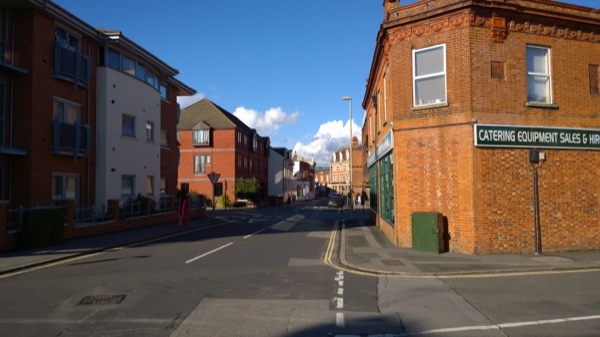
And here are some 1:1 crops from central detail from the Lumia 830 (top) and Lumia 1020 (bottom) - click either crop to grab the original images, if you'd like to do your own analysis.
Seen as-is, there's little to choose between the two shots - the 1020's is fractionally sharper and better defined, but the 830 does well. As you'd expect it to.
Test 2: Medium distance subject, bright sunshine
My local aviation museum, with this rather nice example of a Handley Herald. Here's the full scene:
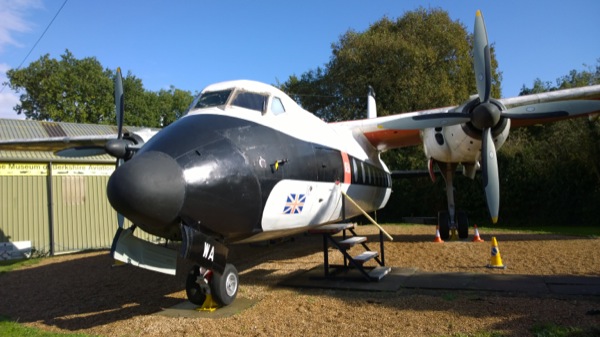
And here are some 1:1 crops from central detail from the Lumia 830 (top) and Lumia 1020 (bottom) - click either crop to grab the original images, if you'd like to do your own analysis.
Depite the higher default resolution, the 830's image is somehow less detailed and less satisfying than the 1020's 5MP version. But remember that both shots are good, I'm just being picky(!)
Test 3: Distance subject, bright sunshine, digital zoom
Still at the aviation museum, here with the Gannet. This time I allowed both phones to 'zoom in', the 830 using traditional digital zoom, though with some Nokia interpolating magic, and with the 1020 using the usual PureView zoom into the full 41MP sensor. Here's the full scene:

And here are some 1:1 crops from central detail from the Lumia 830 (top) and Lumia 1020 (bottom) - click either crop to grab the original images, if you'd like to do your own analysis.
Looked at this closely, the 830's digitally zoomed shot is something of an artefect-strewn mess, but I expected it to be much worse. The 1020, of course, zooms to 1:1 on its sensor and then every single pixel is made to count, without having to 'invent' detail.
Test 4: Indoor lighting, macro(ish) subject
A typical indoor static object shot. Here's the full scene:

And here are some 1:1 crops from central detail from the Lumia 830 (top) and Lumia 1020 (bottom) - click either crop to grab the original images, if you'd like to do your own analysis.
A typical normob shot, and easy to get right, of course. The 830 doesn't quite get the texture right, but it's still very clear and colourful, even seen at 1:1.
Test 5: Night time, bright lights
This pub always seems to have a selection of Christmas lights - all year round. Other than these illuminations, it was very dark indeed. Here's the full scene:
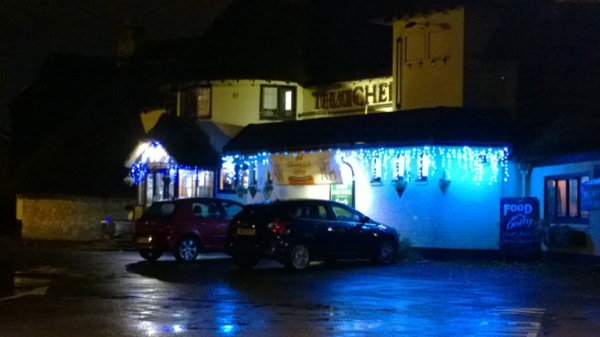
And here are some 1:1 crops from central detail from the Lumia 830 (top) and Lumia 1020 (bottom) - click either crop to grab the original images, if you'd like to do your own analysis.
The lighting conditions here are almost impossible for any camera phone to nail, even the 1020 struggled to pick out detail. Given the sensor that's four times smaller, I think the 830's shot certainly wasn't four times worse. I think a 1" DSLR would be needed to get close to reality for these light conditions....
Test 6: Night time, dead of night
Ultra low light, street scene. Here's the full scene:
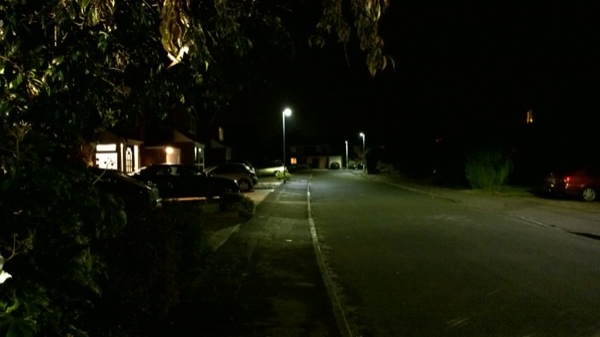
And here are some 1:1 crops from central detail from the Lumia 830 (top) and Lumia 1020 (bottom) - click either crop to grab the original images, if you'd like to do your own analysis.
No, the crops aren't the wrong way round, the Lumia 830 here does outperform the 1020, thanks to better OIS and better algorithms, I'm guessing. Very decent ultra-low light performance from Nokia's slimmest-ever OIS mechanism.
Test 7: Distance detail 1020 show-off...
Partly because I wanted to show off the 'real' zoom in the 1020, compared to actual resolved detail on the 830's 10.7MP sensor. Here's the full scene, as shot on the 830, i.e. native capture, no artificial zoom, this is how far away the building shown below really was:
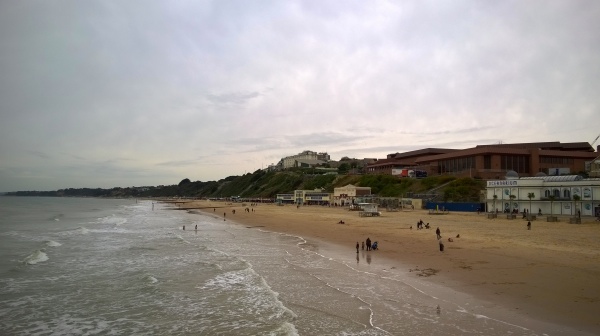
And here are some 1:1 crops from central detail from the Lumia 830 (top) and Lumia 1020 (bottom) - click either crop to grab the original images, if you'd like to do your own analysis.
Although there's no real comparison here, the Lumia 830's photo is very crisp and decent indeed. Again it's the great OIS, a good sensor and great image processing algorithms.
Test 8: Real world flash test(!)
Aw, no Steve with a beer bottle this time - instead a crop from a shot of a 3 year old niece having fun by kneeling on the couch - typical goodish indoor lighting, but with a human subject moving at will and no signs of stopping (for the next 40 years!). This is the scene from the LED-flash-equipped Lumia 830:

And here are some 1:1 crops from central detail from the Lumia 830 (top) and Lumia 1020 (bottom). No full JPGs here for privacy reasons:


The crops tell the story really. For fast moving kids, you need Xenon flash, something which I still rant about to any manufacturers willing to listen. In fact, even the 1020's photo isn't 100% crisp, because the Nokia Camera software is optimised to let in ambient light as well, leading to a slower shutter time. By manually reducing this (or using a 808!), the second crop would be 100% crisp.
Is the Lumia at fault here? No more than for any other LED-flash-equipped camera phone. Ah well. I'm hoping that the burst modes available in Lumia Camera may help pick out usable photos of hard to grab subjects, but I'm not holding my breath!
Verdict
Reviewing the Lumia 830 camera before the Lumia Camera application is released is a bit like reviewing a sports car before the turbocharger has been fitted. But still, there's enough here to be very optimistic. While the LED flash means that certain subjects and use cases are tricky, the same is true for 99% of other smartphones. If my flash tests ring a bell with you, then the 1020 (or Android-powered Galaxy K Zoom) are just about your only options on the market right now.
Away from fast moving kids indoors(!), for general photos in most light conditions, the Lumia 830 surprised me with its detail. Nokia has mastered getting the most from a smaller sensor, the OIS is working really well, the 830's display is super clear and colourful and makes a good viewfinder, digital zoom isn't as bad as one would expect.... all we need now is the new Lumia Camera application to realise the functions that were shown off at the 830's launch.
Comments welcome - were you pleasantly surprised too? Overall, I'm liking the Lumia 830 a lot, watch for my full review in the next week or so. And, when Microsoft/Nokia deigns to release Lumia Camera, watch for an additional camera-specific feature.














